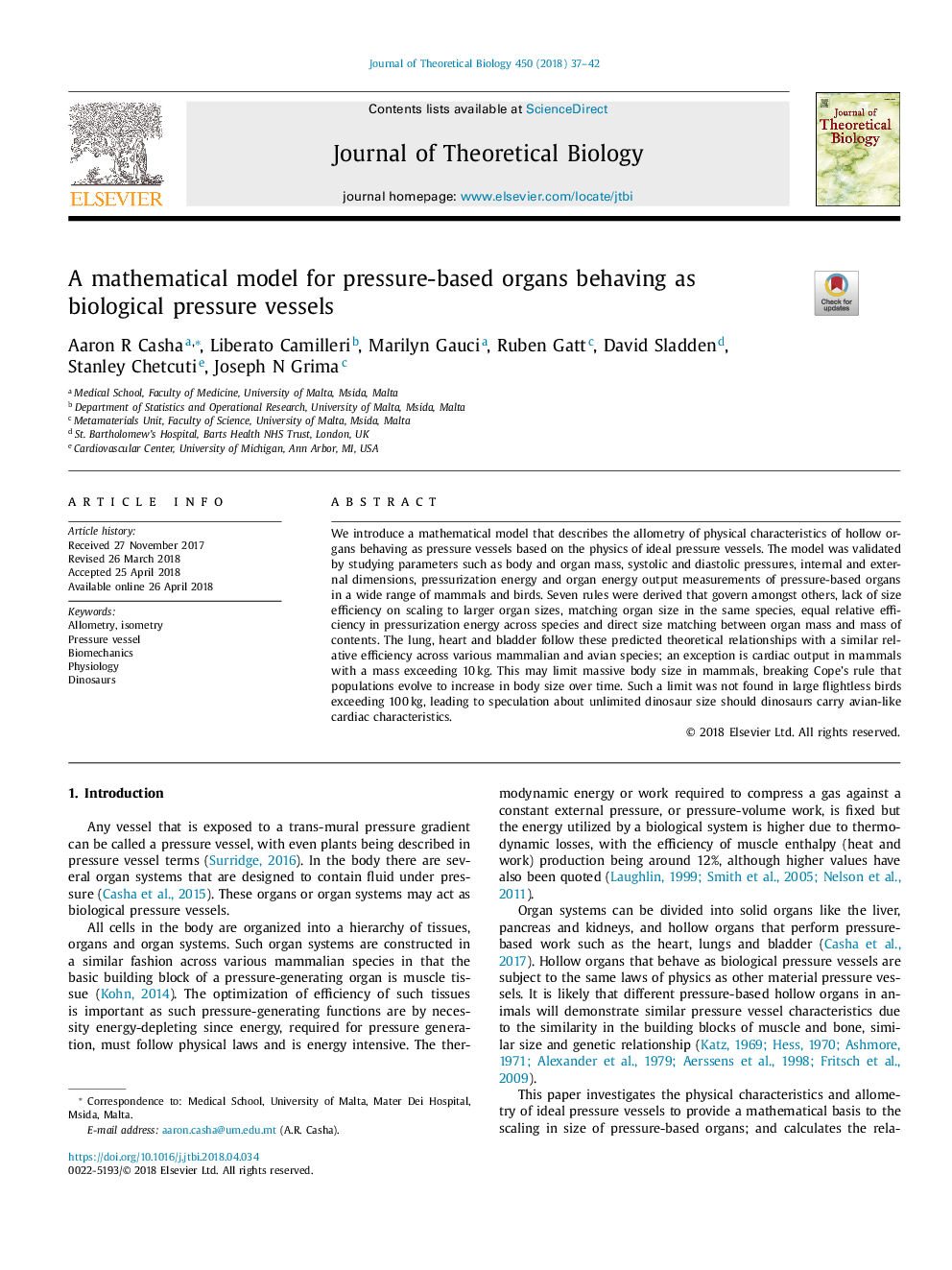| Article ID | Journal | Published Year | Pages | File Type |
|---|---|---|---|---|
| 8876652 | Journal of Theoretical Biology | 2018 | 6 Pages |
Abstract
We introduce a mathematical model that describes the allometry of physical characteristics of hollow organs behaving as pressure vessels based on the physics of ideal pressure vessels. The model was validated by studying parameters such as body and organ mass, systolic and diastolic pressures, internal and external dimensions, pressurization energy and organ energy output measurements of pressure-based organs in a wide range of mammals and birds. Seven rules were derived that govern amongst others, lack of size efficiency on scaling to larger organ sizes, matching organ size in the same species, equal relative efficiency in pressurization energy across species and direct size matching between organ mass and mass of contents. The lung, heart and bladder follow these predicted theoretical relationships with a similar relative efficiency across various mammalian and avian species; an exception is cardiac output in mammals with a mass exceeding 10â¯kg. This may limit massive body size in mammals, breaking Cope's rule that populations evolve to increase in body size over time. Such a limit was not found in large flightless birds exceeding 100â¯kg, leading to speculation about unlimited dinosaur size should dinosaurs carry avian-like cardiac characteristics.
Related Topics
Life Sciences
Agricultural and Biological Sciences
Agricultural and Biological Sciences (General)
Authors
Aaron R Casha, Liberato Camilleri, Marilyn Gauci, Ruben Gatt, David Sladden, Stanley Chetcuti, Joseph N Grima,
